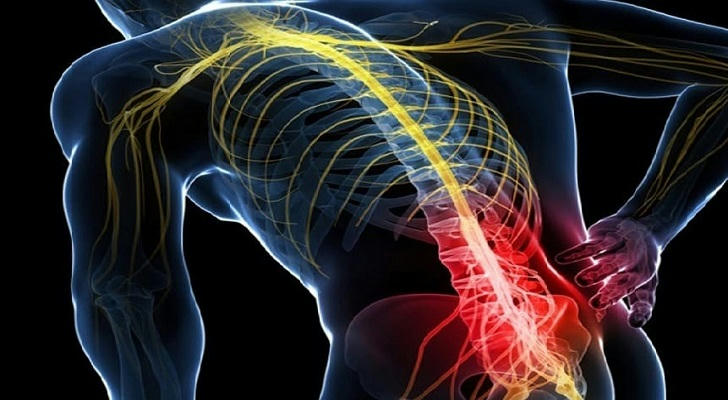Neuropathic Pain Medications: A Comprehensive Guide to Relief and Management
Neuropathic pain is a complex and often debilitating condition that arises from damage or dysfunction in the nervous system. It is characterized by a variety of symptoms, including burning sensations, shooting pains, tingling, and numbness. Unlike nociceptive pain, which is a response to tissue damage, neuropathic pain can persist even after the initial injury has healed. This article aims to provide a comprehensive guide to neuropathic pain medications, their mechanisms of action, types, usage considerations, side effects, and real-world applications, offering hope for those seeking relief.
Causes of Neuropathic Pain
Neuropathic pain can result from a wide range of conditions, such as:

- Diabetes Mellitus: A leading cause of peripheral neuropathy, affecting millions worldwide.
- Postherpetic Neuralgia: Pain that persists after an episode of shingles.
- Spinal Cord Injuries: Can lead to central neuropathic pain.
- Chemotherapy: Some cancer treatments can cause peripheral neuropathy.
- Surgical Procedures: Nerve damage during surgery can result in chronic pain.
Understanding the underlying cause is crucial for selecting the most effective treatment strategy.
Mechanisms of Neuropathic Pain Medications
Neuropathic pain medications work through several mechanisms to alleviate pain:
Blocking Pain Signals: By inhibiting the transmission of pain signals in the nervous system.
Stabilizing Nerve Cell Membranes: Reducing neuronal hyperexcitability, which can cause pain.
Modulating Serotonin and Norepinephrine: Antidepressant medications enhance the activity of these neurotransmitters, which can alleviate pain.
Local Anesthetic Action: Topical agents like lidocaine can block pain signals in localized areas.
Common Types of Neuropathic Pain Medications
Antidepressants:
- Tricyclic Antidepressants (TCAs): Such as amitriptyline and nortriptyline, which are particularly effective for pain with a neuropathic component.
- Selective Serotonin-Norepinephrine Reuptake Inhibitors (SNRIs): Like duloxetine and venlafaxine, which are also used for neuropathic pain.
Antiepileptic Drugs:
- Gabapentin and Pregabalin: Originally developed for epilepsy, these drugs have become first-line treatments for various types of neuropathic pain.
Topical Anesthetics:
- Lidocaine Patches or Creams: Provide relief for localized neuropathic pain, such as postherpetic neuralgia.
Opioids:
- Reserved for severe cases and used under strict medical supervision due to their potential for addiction and abuse.
Precautions When Using Neuropathic Pain Medications
Individualized Treatment: Treatment plans should be tailored to the individual, considering the specific condition and response to medications.
Monitoring for Side Effects: Regular check-ups are necessary to manage and minimize side effects, which can include dizziness, sedation, and gastrointestinal issues.
Drug Interactions: Be aware of potential interactions with other medications, including over-the-counter drugs and supplements.
Long-Term Management: Given that neuropathic pain often requires ongoing treatment, regular reassessment of the treatment plan is essential.
Potential Side Effects
Side effects can vary widely and may include:
- Drowsiness and fatigue
- Dizziness and balance problems
- Nausea and vomiting
- Dry mouth and constipation
- Cognitive impairments
Real-World Case Study: Impact of Neuropathic Pain Medications
Case Study: Meet Sarah, a 45-year-old woman diagnosed with diabetic neuropathy after battling type 2 diabetes for over a decade. Her neuropathic pain was initially managed with over-the-counter pain relievers, which provided minimal relief. As her condition progressed, she experienced severe pain in her lower limbs, disrupting her sleep and daily activities.
Sarah's physician prescribed gabapentin, an antiepileptic drug known for its efficacy in neuropathic pain management. Over several weeks, the dosage was adjusted to find the optimal level that provided significant pain relief without causing intolerable side effects. Sarah also incorporated lifestyle changes, such as regular exercise and stress management techniques, to complement her medication regimen.
After six months of treatment, Sarah reported a substantial reduction in pain intensity, allowing her to return to work and engage in hobbies she had abandoned due to pain. Her case illustrates the importance of tailored neuropathic pain management and the potential for significant improvement in quality of life with the right treatment approach.
The Role of Complementary Therapies
In addition to medication, complementary therapies can play a significant role in managing neuropathic pain. These may include:

Physical Therapy: To improve strength, flexibility, and function.
Psychological Support: Such as cognitive-behavioral therapy, which can help patients cope with the emotional aspects of chronic pain.
Nutritional Counseling: To optimize diet for pain management and overall health.
Mind-Body Techniques: Like meditation and yoga, which can reduce stress and improve pain tolerance.
Conclusion
Neuropathic pain is a complex condition that requires a multifaceted approach to treatment. Neuropathic pain medications offer hope for those suffering from this debilitating condition. By understanding the various options available and working closely with healthcare providers, individuals can find relief and reclaim their lives. As demonstrated by Sarah's case, the right combination of medication, dosage, and lifestyle adjustments can lead to significant improvements. If you or someone you know is experiencing neuropathic pain, consult a healthcare professional to explore the best treatment options. Effective pain management is not just about reducing pain; it's about enhancing overall well-being and quality of life. Remember, every individual's journey with neuropathic pain is unique, and so should be their treatment plan.
